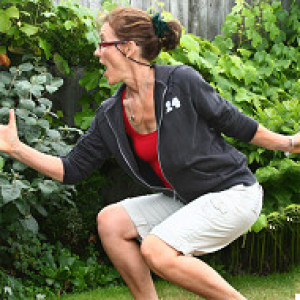Gannets!
Gannets!
The billboard at the Cape Kidnappers Gannet colony tour said the ticket office opened at 10.00. It also said bookings were essential. As I hadn't booked I thought I should get down there early to see whether or not there was a spare seat.
An early-ish start allowed for a cruisey morning on the beach then down to the departure spot/booking office. Whew! Ticket all good to go. It was to be a four-hour trip and, as the weather was very overcast/cloudy and the wind was blowing quite strongly I made sure I had plenty of layers and a good windproof jacket. The mode of transport was interesting - possibly unique! Tractors towing 2 open 'carriages' where passengers sit along the outside rail and rest feet on a barge board. Odd, but it works beautifully on the rock-strewn beaches leading round to Cape Kidnappers. I was very pleased I had my layers though as the open-air transport felt quite chilly for a while.
The trip was along the shoreline and as we went along our tour guide fed us a wealth of information about the coastal formations - fault lines, upheaval, volcanic ash layers, mud layers, lignite layers, lots of evidence New Zealand's earthquake prone history. Shaky Isles indeed!
The first colony at Black Reef was just a quick and small appetiser for the main colony a few kilometres further on. The walk up to the clifftop ensured my layers were peeled off as, at about the same time, the sun began to really shine through.
It's difficult to descrive the colony itself - thousands of birds seemingly oblivious to the humans all around (there is a low rope barrier erected with a polite reminder from DoC not to cross it). Still, even with the rope barrier the birds were only 3-4 metres away from us. But then there are the wayward or adventuresome birds who totally disregard the barrier and venture beyond its cordoned safety and there are the wayward or adventuresome humans who want to stretch the goodwill of nature. When adventurous gannet meets wayward human an arms length is all that separates them (fortunately I didn't see anyone try to touch a bird.)
It's breeding season on the colony and we were priveledged to witness the very odd gannet courting ritual of beak stroking and mutual preening. Cute in a kind of voyeuristic way! Gannets mate for life and the pair return to the same ground nest each year. Male and female take turns to sit on the egg or fly out to sea to find food to bring back to the nest. A gannet chick grows from about the size of a newborn kitten to almost full size (they weigh about 2kg and have a windspan of about 2 metres) in just 4 months. Wow! That growth would take some fuelling. Its inaugural flight is when it leaves the safety of the cliff and heads straight to Australia. No pussyfooting around with practice flights. No mum and dad by its side, it's left to its own devices - do or die. Gannet OE!
Unsurprisingly I took hundreds of photos and I could easily have stayed there another few hours. Something to add to my to do list for when I return. The plus of taking the tour - lots of additinal info and a cruisey 18km round trip. The minuses - not enough time to feast on the many photo opportunities. Next time I may have to walk in and back out just so I can have more time!

Comments
Sign in or get an account to comment.


